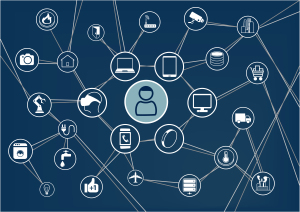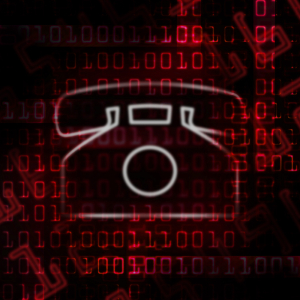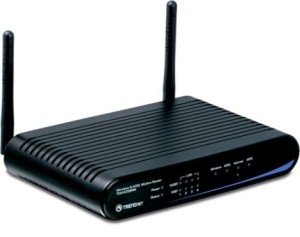Internet of Things: How Telecoms Can Adjust to Meet New Data Realities
 The rapid development of the Internet of Things (IoT) has left many companies scrambling, trying to adapt to the explosive volumes of data that just weren’t predicted (or even imagined) 5-10 years ago. Infrastructures that were designed with maximum anticipated load usage back then simply aren’t prepared to meet growing IoT demands.
The rapid development of the Internet of Things (IoT) has left many companies scrambling, trying to adapt to the explosive volumes of data that just weren’t predicted (or even imagined) 5-10 years ago. Infrastructures that were designed with maximum anticipated load usage back then simply aren’t prepared to meet growing IoT demands.
In fact, many experts now speculate that by the year 2020 there will be more than 50 million connected devices forming the Internet of Things. And although that amount may seem staggering, with constant innovation taking place in the form of wearable mobile technology and smart everything—from cars to coffee pots—that number may end up looking like a mere drop in the ocean.
This situation is especially relevant for network operators in the telecom industry. Surging amounts of data coming in and the various new ways that business users need to analyze and access that information is placing a huge strain on systems. And typically, call centers are valiantly trying to cope with massive CDRs (call data records) from increased device connectivity and usage requirements.
Advantages of Adaptation
A major advantage to the Internet of Things is the capacity to analyze vast quantities of data in relation to patterns and other actionable information. However, this necessitates being able to store huge volumes of historical data for lengthy times frames.
And if database infrastructure and analytics are adapted appropriately, the competitive advantages include a host of customer service improvements such as:
- The inclusion of value-added and customized services through enhanced analytics
- Isolating patterns in archived CDRs to identify service issues and allow alterations in network configurations designed to eliminate them
- Identifying the similarities in usage patterns and service tickets to develop new offers and targeted marketing plans
Strategies for Adaptation
Adapting to the sheer volume of data engendered by the Internet of Things involves strategic planning. Employing innovative approaches to data analytical infrastructure design will help to position telecoms, and their service providers, with the flexibility necessary to meet current and upcoming IoT challenges.
A traditional approach would involve investing in a monolithic relational database, but this type of solution is little more than a temporary fix. Specialized technologies such as cloud-based ad-hoc analytics and real-time investigative database structures (like RAID) offer functional solutions for the hefty network loads present with the IoT. Being able to mine large quantities of records quickly and efficiently will allow operators to identify and react to network issues swiftly, as well as troubleshoot possible situations on an ad-hoc basis.
Possible network issues include:
- Problems with various factors captured in call records such as voice, video, or data transmissions
- Performance functionality of certain device types, operating systems, browsers, or applications
- Communication technology, i.e 4G, LTE
Thinking about database infrastructure and analytics in new ways will help telecoms adapt to the incredible opportunities created by the Internet of Things.
Debunking Common Virtual Security Myths
 When it comes to deploying security in a virtual environment, some industry professionals draw a blank–or, worse, they think that it’s necessary to replace existing physical security protocols with virtual substitutes. This is not true.
When it comes to deploying security in a virtual environment, some industry professionals draw a blank–or, worse, they think that it’s necessary to replace existing physical security protocols with virtual substitutes. This is not true.
In fact, the best approach to use when viewing virtual security is a logical one. Consider this: A jewelry store owner who expands the physical location or who opens a new facility would not try to use his/her current security force to protect the new location, nor would the owner secure the new location by trying to stretch the current security force between two facilities and simply hope that the depleted resources will cover the need. Both sites need to be secure.
Considering the current, overwhelming surge in virtual as-a-service solutions, knowing how and when to apply virtual security measures like firewalls has become a crucial consideration for businesses. This is especially due to the fact that according to industry specialists, over one-fifth of all VPN (virtual private network) security will be deployed in a virtual format by the end of the year.
Layered Security
Companies already understand the flexibility and cost-saving advantages of moving information and even key infrastructure to the cloud (hence, the rapid growth). That said, virtual security protocols should not be an either/or dilemma; they should be employed in a layered defense. The physical systems already in place should be supported with virtual firewalls—not replaced with them—depending on the level of the workload requirements.
The reasons for this layered defense are abundant. Not only does it secure the virtual aspects of the data system, but the same ease of alteration and on-demand access that is available in a virtual environment is accessible with virtual firewalls. Companies can adjust deployment according to specific needs, which allows them to better control financial commitments.
Deployment Confusion
The issue of deployment confusion has been discussed at length by industry experts. Keeping pace with the rapidly expanding network services available in a virtual environment means finding ways to secure that activity from threats.
Therefore, deployment should depend on the same workload and accessibility requirements that have determined the current physical security measures.
Notably, there are two basic types of virtual firewalls:
- Introspective: This type resides within the hypervisor side of each virtual NIC (network interface card). Although it offers a well-managed way to keep virtual machines protected, it is limited in availability at this time.
- Edge: This is the most common form of virtual firewalls. These reside between two or more virtual portgroups or switches. The beneficial aspect of this type of virtual security is that companies can deploy them at the “edge” of their data center or between trust zones in a cloud environment, depending on their workload and throughput activity.
Rules of the Game
In general, there are three fundamental rules when it comes to adding virtual security services to a network:
- Deploy virtual firewalls to enhance the depth of network safety in conjunction with the physical securities already in place.
- Know the specifications of a virtual firewall. (The specs for physical firewalls are outlined; virtual ones should be outlined, too.)
- Don’t limit virtual security to one type (or breed) of firewall. (Requirements play an essential role in the types and amount of firewall protection needed for a network.)
With the changing environment of virtual services, companies can discover the best means of keeping their networks secure by incorporating virtual security protocols. The investment is well worth it when the risks are considered, and the faster, more adaptive role that these protocols play can make a huge difference in security compliance.
Top 5 Ways to Secure Sensitive Information from VoIP Phone Hackers
 Managing business operations in today’s virtual environment is an ongoing challenge. As more and more customers rely on the global access created through internet options, Voice over Internet Protocol (VoIP) has become a standard technology for many companies due to its incredible features and cost-effective benefits. But the emergence of new technologies also often means an increase in new ways of criminal hacking. Though hackers cannot be prevented 100 percent of the time, companies can certainly neutralize the threat to a great extent.
Managing business operations in today’s virtual environment is an ongoing challenge. As more and more customers rely on the global access created through internet options, Voice over Internet Protocol (VoIP) has become a standard technology for many companies due to its incredible features and cost-effective benefits. But the emergence of new technologies also often means an increase in new ways of criminal hacking. Though hackers cannot be prevented 100 percent of the time, companies can certainly neutralize the threat to a great extent.
As so much sensitive information is transposed through Dual-tone Multi-frequency (DTMF) tones, a security breach over a VoIP system can spell disaster in more ways than one.
In fact, almost any business that performs operations through Time-division Multiplexing (TDM) and Internet Protocol (IP)-based voice frameworks through VoIP are susceptible to phone hackers (sometimes referred to as toll fraud). Not only are payments and financial information at risk, but confidential data collected from healthcare providers, engineering companies, and corporate structuring plans (like downsizing or mergers) are also in danger from phone hackers.
Why?
Simple. There is just no substitute for the cost-effective benefits of VoIP. And the eruption of VoIP usage has shown up on hacker radar because previously IP-based communication was centralized on local networks, which were typically protected from the public internet. However, that’s ancient history as more and more of VoIP traffic is routed through un-encrypted, public internet services by telephony providers.
It is hardly surprising, therefore, that there are many tools available now which make it simple, easy, and untraceable for hackers to infiltrate confidential phone conversations. Practically anyone with a little bit of tech savvy and basic research can start collecting and storing voice information from external IP networks overnight.
The Best Offense Is a Great Defense
Because of these increased risks, companies must rethink their supplier’s encryption protocols and safety measures. What may have been adequate when the VoIP was incorporated is most likely now out of date.
Here are the top five things to consider when questioning a VoIP supplier about the systems they have in place to combat phone-based cyber-crimes:
- Ask providers about their Session Initiation Protocol (SIP) trunking services. The system should feature automatic deactivation of any components that aren’t secure, as well as encryption capability for all calls.
- Companies that routinely record calls (a necessary quality control procedure for many businesses) must ensure that their telephony system conforms to ISO protection requirements outlined for storing sensitive information.
- For any payments conducted over the phone, companies must adhere to the Payment Card Industry Data Security Standards (PCI DSS). Also, it is vital that the VoIP provider allocates encrypted connections for payment data.
- Find out about Transport Layer Security (TLS) protocols. Protecting client/server applications from tampering or spying between transports is crucial for secure communications.
- Depending on the risk of remote access susceptibility, consider a Distributed Denial of Service (DDOS). This creates a direct access circuit that is only available for designated voice traffic.
The incredible cost benefits of VoIP through external IP networks are great. But knowing the heightened risk of phone hacking through open (or public) network VoIP can help companies prevent devastating breaches in data security by neutralizing the threat of confidential information from being intercepted.
Could Net Neutrality Impact VoIP Telecommunications Services?
The often debated topic of net neutrality is usually approached from the angles of online censorship and web services, but there are also very real ramifications for the Internet-based industry of VoIP telecommunications. Put simply, “net neutrality” is a principle by which internet service providers cannot discriminate against the data that they transmit. Under net neutrality, all data is required to be transmitted with equal fidelity and at the same price. Without net neutrality, an ISP can alter its pricing structure and bandwidth prioritization based on type and source of traffic.
There are two sides to net neutrality: charges to the consumer and charges to the content provider. Without net neutrality it would be possible for an ISP to charge someone more for having VoIP telecommunication services with another telecommunications provider. Further, the ISP would also be able to prioritize the data sent to and from this other telecommunications provider as less important, thereby lowering overall call stability. The ISP would also be able to charge VoIP companies more regarding the amount of data it transmitted. This could increase the overall price of VoIP communications.
Many companies do not contract services for VoIP telecommunications directly with their Internet Service Provider; commercial VoIP services tend to be contracted specifically through telecommunications companies, while residential services are more likely to be contracted through an ISP. Should ISPs desire to limit this type of traffic or promote their own commercial services, a lack of net neutrality could become costly for corporate VoIP clients. Other clients may see the stability or the speed of their telecommunications service slow down drastically.
Restricting external VoIP services in this way may seem unlikely, but it’s exactly what many individuals are concerned ISPs will do regarding streaming video services, which have become competitive with the television services provided by cable-based Internet service providers. At the same time, Internet Service Providers are assuring consumers that a lack of net neutrality will not significantly alter their product offerings .
Choosing A Partner: Telecom Consulting Services in Minneapolis
As the pinnacle of telecom consulting services in the greater Minneapolis area, Integrated Communications is dedicated to bringing our local clients expert telecommunication advice for installing their business phone systems. Minneapolis, St. Paul and the surrounding areas support numerous businesses, both small and large alike. We connect those working to better themselves and our community by providing solutions for phone system services.
Low Costs, High Local Pride
Costs for implementing or updating a telecommunication system can start to rack up – depending on the services and contractor you choose, of course – but with our Cost Reduction program, our 800 clients save an average of 25% on their monthly expenses.
Serving every town and suburb throughout the Twin Cities, we offer free telecom consulting services to any local business owner, startup, corporate entity — whoever needs assistance. We aren’t a boss, we’re a partner. In fact, we are so good with our clients that they come back 98% of the time. Now that’s consistent customer service.
Every day, we preserve and act-out the goal that everyone in the telecommunication industry strives to reach: Be a trustworthy and useful resource for our customers. Instead of dictating, we democratize, working with each client individually to provide decades of experience in telecom consulting services. We will assess your situation, and make our professional recommendations within your company’s business VoIP systems needs.
If you have questions about business phone solutions, don’t worry. The process may be in depth, but thankfully partners are available right around the corner to provide you with stress-free options in phone system services.
A Local Partner for Telecom Consulting Services
We are proud to say that we serve every type of business in the Twin Cities and it’s surrounding suburbs. Our telecom consulting services are unmatched in the local business scene. Fill out our form so we can contact you directly, or call us locally at (763) 201-8000 for a free consultation in phone solutions today.
Wireless Emergency Alerts Ensures Better Community Protection
The Wireless Emergency Alerts (WEA) system , also known as Commercial Mobile Alerts, allows federal agencies to aggregate alert messages from the President, the National Weather Service (NWS) and emergency operations centers . Alerts are then transmitted to wireless providers, who distribute them to their customers’ cell phones via Cell Broadcast, a technology similar to SMS text messaging.
The three types of alerts delivered using this system are:
- Alerts issued by the President
- Alerts of imminent threats to life and safety
- AMBER Alerts
FEMA joined the FCC and the cellular industry on the Personal Localized Alert Network (PLAN) formulating the technology that actually transmits alerts to cell phones.
As part of the Integrated Public Alert and Warning System (IPAWS), aggregators convert original messages to mobile phone format for distribution over networks to customers.
FEMA Wireless Emergency Alerts notify citizens about imminent threats via their mobile devices. Under normal conditions, text and phone messages from cell phones are impacted when there is congestion. That is why special technology is required for critical and lifesaving alerts to get through. Location-based messages are sent with information relevant to a cell phone subscriber’s locale, a service that’s free for emergency managers.
TeleCommunication Systems, Inc. provides secure and reliable mobile communications technology. Fielding solutions in E9-1-1, text messaging, commercial location and deployable wireless communications, Telecommunication Systems, Inc. is a leading mobile cloud services provider. It supports applications spanning the gamut from navigation and asset tracking through telematics. Government agencies incorporate the company’s state-of-the-art cyber security and deployable satellite solutions within the core of their critical mobile communications systems.
To date Wireless Emergency Alerts have helped Colorado residents receive alerts about local flooding and hazardous road conditions. Minneapolis, MN residents helped facilitate a safe and speed recovery of an abducted child with these emergency mobile alerts. In East Windsor, CT, a WEA alert contributed to saving the lives of a camp counselor and her students . In Elmira, NY, an impending tornado threatened municipal residents, but a WEA alert helped them reach safety.
What to Look for in an Internet Provider
.
The Internet has been around for so long, the question of “Should I get the Internet or not?” has changed to “Which Internet service provider (ISP) should I choose”? With so many of them around, and with each one seeming to offer the same product in the same package, it can be difficult- but not impossible- to know what to look for in an Internet provider.

Type of Use
Businesses and individuals look for different things with an Internet provider because of demand, use and capability. Whereas an individual usually just surfs the Net, watches movies and does word processing, a business relies on much more than that, with many more users needing to do their work at the same time. Businesses likelier need Internet with higher bandwidth and bandwidth speeds so that more data can travel more efficiently.
Type of Contract
Going on a contract typically saves money, as your ISP knocks off a few dollars each month in agreement to you sticking with them for a certain length of time. The downside to this, of course, is that you’re locked in with one ISP for one to three years and might pay a penalty to get out. The alternative is to go with an ISP on a monthly basis: you might pay a bit more each month, but you retain your freedom to go with another ISP whenever you want.

Type of Coverage
In the United States, there are dozens of ISPs to choose from and they range in size from local to national. The benefit of going with a nationally-known ISP is that you know exactly what you’re getting, the ISPs have years of reputations behind them, and it’s fairly easy to get parts and service because of how big the company is. Conversely, going with a local company has its pluses, too. Local Internet providers tend to be more competitive because they want to grow and attract a wider customer base, so they’re likelier to offer better deals on a more regular basis. They also haven’t been swallowed up by size, and can usually offer better customer service, treating you like a person instead of a number.
Type of Equipment
To get service started, you need a certain piece of equipment from your Internet provider- a modem. Some ISPs will happily sell or loan you a modem, which comes with pros and cons. While it’s easy and convenient, it also puts more money in their coffers. If you can find an ISP that lets you use your own modem, not only can you control the type and quality of it, but you’ll also pay a lot less.
No matter what you look for in an Internet provider and who you choose to go with, remember that Integrated Communications is here for all your business and personal telecommunications needs. Visit our home page to see the wide range of services we provide.
How to Protect Your PBX System from Fraud
A private branch exchange (PBX) works by having a piece of hardware that acts as a switchboard, sorting, routing and connecting all the calls that use the system. It’s an enticing option because a corporation owns the PBX system, not a phone company, and can cut the cost of having to get a specific phone line for each user in the organization’s central office. But despite its simple and straightforward approach, PBX hasn’t ignited the public’s attention the way the telephone first did.
PBX Fraud
There are two basic kinds of telecom fraud: PBX fraud (DISA), and voicemail fraud. With the first one, PBX (direct inward system access), fraudsters sell the PBX lines to third-party operators who sell long-distance at a high profit. Because these calls look the same to the service or equipment providers, all an intruder has to do is use a system command to get a dial tone. Once they’ve done that, they make long-distance calls on behalf of those selling them for profit.
A really simple way to help prevent this is to use access codes in your PBX system. As businesses grow and acquire more people, requiring each employee to input an authorization code or smart password can drastically cut down on the amount of long-distance hacks that take place after business hours. You can also block long-distance calls to the Caribbean, one of the biggest hotspots where long-distance calling fraud occurs.
Voicemail Fraud
By far, the most common type of telecom fraud to take place is through a PBX system’s voicemail. But whereas an intruder committing PBX fraud would use a system command to place long-distance calls, here they would do so via voicemail. And once they get the dial tone, they’ve successfully commandeered your PBX system for their own profit and benefit.
Having a complex voicemail password, changing it on a regular basis, and using the maximum number of characters are three of the easiest ways to cut down on voicemail fraud happening to your PBX system. Another is to delete a mailbox when an employee leaves the company because the longer the mailbox is not attended to (and the password left unchanged), the easier it is to hack into it. You can also limit the voicemail to internal calling so third parties have a much more difficult time accessing your PBX system voicemail.
Although there’s no foolproof method of protecting your PBX system against fraud, you can make it just about impossible for third parties to intrude. And remember to always monitor and analyze activity because the more in tune you are with your PBX system, the less chance there is of fraud taking place.
For all of your business PBX and telecommunications needs, contact Integrated Communications today.
How Technology Has Transformed Halloween
Halloween is a time for imagination, fright, social gatherings, and, of course… sugar! Remember Halloween years ago – the frenzied parents looking for costume ideas that may appeal to their “tween”, and the search for a great scary movie with more than a cheap thrill – which can sometimes seem impossible to find; well, just as technology has shaped businesses and made things easier, so has it morphed Halloween!
The Tracking Application
With a simple download of a free application, every parent can now release their child from the ever embarrassing parent-chaperoned trick-or-treating and keep track of their child via Smartphone as they knock down doors for Halloween goodies! By downloading the various apps (i.e. Find my Friends, AirCover Family Locator, etc…) parents can rest-assured their child is safe with older siblings and/or friendly neighbors and allow their child a night of Halloween fun without compromising their child’s safety or their own peace-of-mind.
Social Media
Whether it’s a local haunted house that’s getting rave reviews, or the newest trends in costumes, social media and the Internet has changed Halloween forever! By finding reviews, costume pictures, and your favorite celebrities, technology has made it easier to enjoy Halloween and share it with people from around the globe. So, when you dress-up for the grown-up Halloween party or take a picture of your little pumpkin, you can now share that image with extended family members and those who are miles away.
YouTube
Although YouTube may be considered a social media platform, it deserved a spot on our list all on its own. YouTube has drastically changed Halloween costumes…
Any average Joe/Jane can now expertly apply special effects makeup to create more realistic costumes and make scaring others an even more frightful event! A few YouTube special effects/makeup channel favorites are:
http://www.youtube.com/user/SFXMakeupChannel?feature=watch
http://www.youtube.com/user/Promise21111?feature=watch
http://www.youtube.com/playlist?list=PL2F18ACA5A9DC97A0
And so many more… (Literally type in “Halloween makeup effects” and you will be overwhelmed by what’s available)
Movie Enjoyment
Sure, as a kid the sound of a chainsaw starting, or a plain white mask may have scared the “bejeebus” out of you. Fortunately for the growing movie fanatic, technology has changed the way scary movies operate and the fear-factor they now ignite! Take the horror thrillers, The Blair Witch Project and Paranormal Activity, for instance; these films changed the way many horror flicks are presented to audiences. By incorporating the technological advances of the handheld video-camera, these movies have now transformed unrealistic monster stories into “it-could-happen-to-you” point of view whodunits! Even more pivotal is the switch from character-scare to special effects chills. Before technological advances, films such as The Shining and The Poltergeist could only rely on characters for a frightful effect. Now, many modern horror films blend scary characters and special effects to create the ultimate in horror adventures.
Let us know what other amazing ways Technology has transformed Halloween!
“Keeping-up” with Integrated Communications (POST#2)
INTEGRATED TEAM IN CHICAGO
September 11, 2013, a few employees of Integrated Communications trekked to Chicago for the Cloud Partners Event! Many things were learned, and the keynote speaker really portrayed the importance and relevance of “the cloud”, but, of course, we also had quite the Chicago adventure.
Check out pictures from our Chicago outing and the great experiences we endured – including the engagement of two Integrated employees!
“THE L-TRAIN EXPERIENCE”
We all bought train and bus basses for Chicago, and I’m sure we all HIGHLY recommend going this route if you’re ever in the area. It was a convenient and affordable way to travel around the great city.
“THE CLOUD PARTNERS CONVENTION”
They keynote speaker for the event was excellent. She had some interesting statistics and bits of insight – definitely a great choice!
“THE CHICAGO ART”
Who knew pants could be art? Chicago did!
“THE LEGEND”
Buddy Guy came out on stage while Setara and Nick had FRONT-ROW seats at Buddy Guy’s Legends! It was an awesome experience, the music was great and the gumbo was fantastic!
“THE SCENERY”
Dialogue Conferencing was spectacular and invited all four of us to attend the lake and river boat tour with them! We captured some beautiful scenery shots while on the boat. Enjoy!
“THE LINCOLN PARK ZOO”
This place was amazing! The FREE zoo captured out hearts with Lions, Tigers, and Bears, OH MY!
“THE WILLIS TOWER”
Yes, we went UP, WAY UP (about 110 floors) to the top of the tallest tower – once named the Sears tower, this tower comes equip with a sky deck, and one heck-of-a-view!
“THE PROPOSAL”
While in Chicago (on the last day and last stop), Nick proposed to his girlfriend and Integrated employee, Setara. Right next to Lincoln Park at the butterfly conservatory, this couple got engaged – It was SPECTACULAR. I love you Nick – I DO 🙂



































